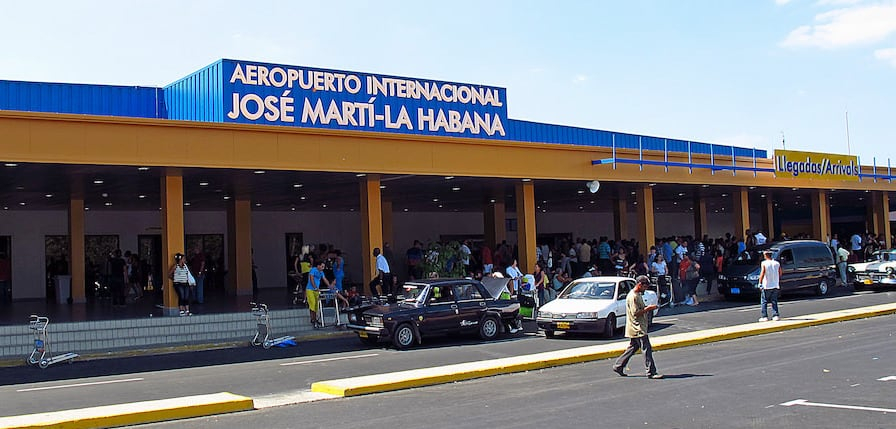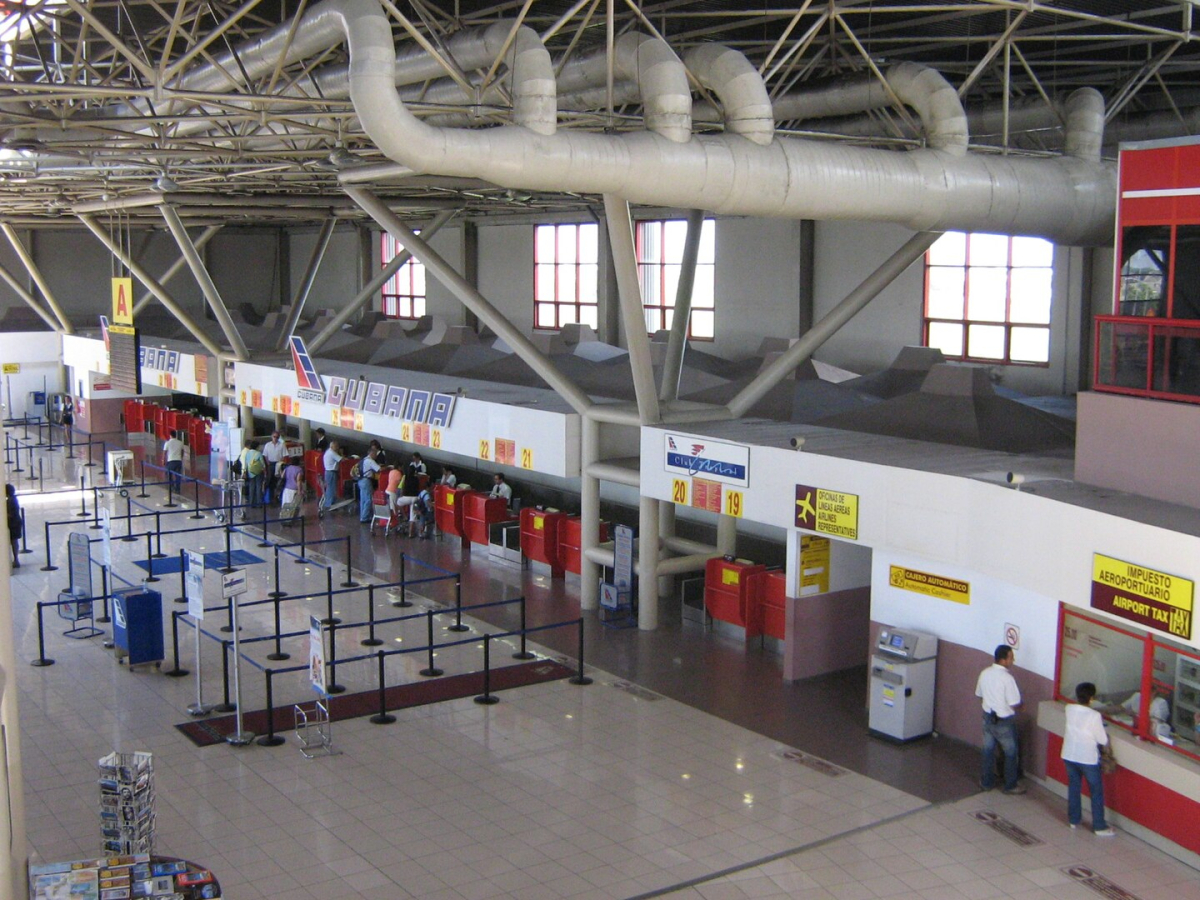Cuba’s airports are gateways to a world of tropical warmth, vintage charm, and Caribbean rhythm. Whether you arrive through Havana, Varadero, or Santiago de Cuba, understanding the airport system helps make your trip smoother. This Cuba Airports guide covers all major international and domestic airports, arrival procedures, transport options, and useful traveler tips.

Overview of Airports in Cuba
Cuba has around 25 airports, of which 10 handle international flights. Most foreign travelers arrive through Havana’s José Martí International Airport, while others fly into Varadero, Holguín, or Santiago de Cuba depending on their resort destination.
- International Airports: 10 (Havana, Varadero, Holguín, Santiago, Cayo Coco, Santa Clara, etc.)
- Domestic Airports: 15+ serving smaller cities and tourist areas
- Main Airlines: Cubana de Aviación, Air Canada, American Airlines, Iberia, Air France
Major International Airports
1. José Martí International Airport (HAV) – Havana
Located about 15 km southwest of central Havana, José Martí International Airport is Cuba’s busiest and most important airport. It has four terminals, with Terminal 3 handling most international flights.
- IATA code: HAV
- Distance from city center: 30–40 minutes by taxi
- Facilities: Currency exchange, ATMs, duty-free shops, cafés, VIP lounge
- Transport options: Official taxis, pre-booked hotel transfers, car rentals
- Average taxi fare: 25–30 USD to central Havana
Customs and immigration can take time, so plan for at least one hour upon arrival. Free Wi-Fi is limited; purchase a temporary ETECSA internet card if needed.

2. Juan Gualberto Gómez International Airport (VRA) – Varadero
The second-busiest airport in Cuba, Varadero’s Juan Gualberto Gómez Airport primarily serves leisure travelers heading to the resort region.
- IATA code: VRA
- Distance from Varadero resort zone: 30 minutes
- Facilities: Currency exchange, cafés, souvenir shops, car rentals
- Airlines: Air Canada, Sunwing, Condor, Air Transat, Cubana
- Taxi fare: 30–40 USD to central Varadero
Many charter flights from Canada and Europe arrive here directly, avoiding the need to transit through Havana.
3. Frank País International Airport (HOG) – Holguín
Situated in eastern Cuba, Frank País Airport is the main entry point for visitors to Guardalavaca and Holguín resorts.
- IATA code: HOG
- Distance from Holguín city: 13 km (20 minutes)
- Facilities: Basic duty-free area, car rentals, cafés
- Airlines: Air Transat, Condor, WestJet, Cubana
4. Antonio Maceo International Airport (SCU) – Santiago de Cuba
In Cuba’s southeastern corner, Antonio Maceo Airport connects Santiago with Havana and several international hubs.
- IATA code: SCU
- Distance from city center: 8 km (15 minutes)
- Facilities: Currency exchange, snack bars, VIP area
- Airlines: Cubana, American Airlines, Air Century
5. Jardines del Rey International Airport (CCC) – Cayo Coco
Serving the resort islands of Cayo Coco and Cayo Guillermo, Jardines del Rey Airport caters mainly to all-inclusive tourists.
- IATA code: CCC
- Distance from resorts: 15–25 minutes
- Facilities: Duty-free, car rentals, medical post
- Airlines: Air Canada, Sunwing, WestJet

Domestic Airports
Cuba has a network of regional airports connecting Havana with Santiago, Camagüey, Cayo Largo, and Isla de la Juventud. Domestic flights are operated primarily by Cubana de Aviación and small charter companies.
- Key domestic airports: Cayo Largo (CYO), Camagüey (CMW), Santa Clara (SNU), Nueva Gerona (GER)
- Flight duration Havana–Santiago: ~1.5 hours
- Average ticket price: 100–150 USD one way
Arrival Procedures
All travelers entering Cuba must present a valid passport, tourist card (visa), and proof of travel insurance. Customs officers may perform random baggage checks — keep declarations simple and avoid bringing satellite equipment or drones without prior approval.
- Tourist card: Usually included in flight packages
- Health form: Completed online before departure via D’Viajeros platform
- Customs limit: Duty-free allowance up to 200 cigarettes and 3 bottles of liquor
Transportation from Airports
Taxis are the primary mode of airport transfer across Cuba. Official taxis are metered and reliable; confirm the price before departure. In Havana and Varadero, pre-booked hotel transfers are also available.
- Taxi cost to city center: 25–40 USD (depending on distance)
- Bus service: Available from Varadero and Holguín to nearby resorts
- Car rental: Cubacar, Havanautos, and Rex desks at major airports
Facilities & Services
- Currency exchange offices (CADECA) in arrivals and departures
- Medical assistance centers at all major airports
- Restaurants, coffee bars, and souvenir shops
- Limited Wi-Fi access (ETECSA cards sold on-site)
Tips for Air Travelers
- Arrive at least 3 hours before international departures.
- Keep small bills in euros or dollars for taxis and snacks — card systems may fail.
- Download offline maps before arrival — mobile data can be unreliable.
- Be patient at immigration and baggage claim; queues are common.

Where to Go Next
- Transportation Guide for Cuba – Learn how to get around the island efficiently.
- Cuba Travel Tips – Practical advice for first-time visitors.
- Cuba Health & Safety – Medical services and safety guidance for travelers.
From bustling Havana to peaceful Cayo Coco, Cuba’s airports offer the first glimpse of a country full of contrasts. With a bit of preparation and patience, your arrival and departure can be as smooth as the island breeze.
